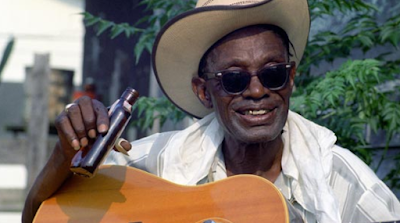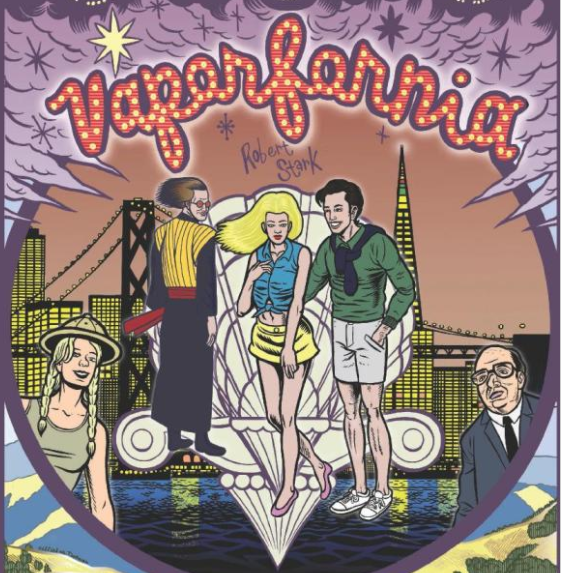Fear of a Black Texas
 | |||
| Who's afraid of Lightnin' Hopkins? |
History, however, provides numerous examples of ethnostate initiatives that have been advanced through peaceful means – but seldom finding the levels of support necessary to see the plans through to fruition. One interesting example from the twentieth century is the Texas Purchase Movement espoused by Harvey Johnson, a Union Baptist Church pastor and activist out of Baltimore. Bruce Glasrud and Gregg Andrews, in their essay “Confronting White Supremacy: The African American Left in Texas, 1874-1974”, summarize the historical background:
 |
| Rev. Harvey Johnson |
In 1899, Texas-born minister and author Sutton E. Griggs offered a different and more radical challenge to white supremacy in Texas. Griggs published a novel entitled Imperium in Imperio; this black-nationalist novel called for blacks, either with force or by the ballot and numbers, to take over Texas. Griggs asserted what a number of black Texans had already perceived, that a strong nationalist stance was called for in the Lone Star State. Black nationalists realized that they must depend upon self-reliance and racial pride, through separation from whites and through working within their community by pursuing collective action. Although varied schemes emerged, in general three types of black nationalist objectives developed – to establish separate black communities within or outside Texas, to create a separate state or nation for blacks (such as that suggested by Griggs), and colonization in Mexico or Africa.
Black Texans were involved in numerous efforts for racial advancement and political change via black-nationalist proposals. They migrated to Kansas and Oklahoma to set up all-black communities or at least to establish themselves in states that seemed to have less white racial antagonism. […] Other individuals attempted, as Griggs suggested, to transform Texas from a white-dominated state to an all-black state. As far back as 1863, U.S. Senator James Henry Lane, a Kansas Republican, introduced legislation to divide Texas in two, and make one half a separate state for blacks. The law was endorsed by a Senate committee, but failed in the Senate at large. By the twentieth century, similar efforts emerged. In 1910, the Texas Purchase Movement called upon the federal government to purchase the state of Texas from landowners, sell it to African Americans, and give them one hundred years to repay the debt. A later proposal, in 1919, called for the creation of a separate state on the border between Texas and Mexico that would have the same relation to the United States as Canada had to England. Others suggested establishing black colonies in the western United States or in Mexico. These efforts, though supported by black Texans, had the disadvantage of needing white support. That support was not forthcoming.1
Peggy Hardman of the Texas State Historical Association adds:
Support for the [Texas Purchase Movement] plan came primarily from rural blacks who, at the turn of the century, still lived in an economic and social situation approximating that of the slavery period. Discouraged at ever achieving a responsible position in society, and taking to heart the often repeated admonishment that they were the “nation’s burden”, the scheme for separation of the races, and an independent black nation found favor with Texas’s poor and country dwelling blacks. The scheme did not, however, have any supporters among white Texans. The Nation, a magazine known to be in sympathy with the plight of America’s black population and their efforts at achieving full citizenship, denounced the Texas Purchase Movement as “preposterous”. The Texas Purchase Movement scheme, like other separatists plans, came to nothing, and was eventually discarded.2The Purchase Movement’s rationale was expressed in the following statement, printed by the Nation in 1910:
We are ready and anxious to go, many of us, because we receive very little encouragement to grow up our boys and girls into the best types of manhood and womanhood, for many of the laws are against our progress and development; and those that are for our special benefit are seldom enforced for our protection, and, indeed, we are coolly told we are the nation’s burden.3Whites, and white Texans, particularly, are hardly to be faulted for failing to endorse the plan, given that it called for the transfer of the state “with all that it has and contains; with its entire outfit, including stock and crops”4. In retrospect, however, and in consideration of all that has passed between whites and blacks in intervening decades, was Texas really such an exorbitant sacrifice to ask for peaceful racial coexistence in North America? And is it really so difficult, in surveying Texas with its harsh and arid expanses, giant rivers, and southern heat, to imagine a chunk of Africa transplanted across the ocean?
Rainer Chlodwig von K.
Rainer is the author of the recently banned books Drugs, Jungles, and Jingoism and Protocols of the Elders of Zanuck: Psychological Warfare and Filth at the Movies.
Endnotes
- Glasrud, Bruce A.; and Gregg Andrews. “Confronting White Supremacy: The African American Left in Texas, 1874-1974”, in Cullen, David O’Donald; and Kyle G. Wilkinson, Eds. The Texas Left: The Radical Roots of Lone Star Liberalism. College Station, TX: Texas A&M University Press, 2010, p.163.
- https://tshaonline.org/handbook/online/articles/pkt01
- “The Week”. The Nation vol. 91, no. 2358, p. 202.
- Ibid.



Comments
Post a Comment